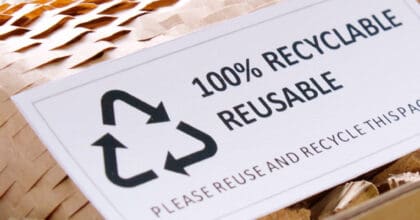The important thing to remember about all GMO-labeling efforts is that they are stemming directly from consumer demand. Per Mintel’s Free-from Food Trends US 2015 report, nearly three in five consumers rank GMO-free as one of the top five free-from claims they seek; a quarter put it in the top two. Furthermore, over half of Millennials indicate they purchase foods bearing a GMO-free claim, including three-quarter of Millennial dads.
One quarter of Americans rank GMO-free as one of the top two free-from claims they seek
The consumer reasoning behind the desire for GMO labeling is not exactly cut-and-dried: some are wary of the notion of what they term “frankenfood,” while others are largely distrustful of anything that they would regard as “unnatural” in their food. For that matter, the entire concern about GMOs seems to be a direct offshoot of consumer interest in “real” foods, those products with cleaner labels (ie fewer and less-complicated ingredients).
The biggest problem with any company attempting to go GMO-free is the lack of consistent regulation surrounding any such claims. The FDA has been almost purposely vague about GMO-free claims. In November 2015, the FDA did give final guidance for voluntarily indicating whether food products are derived from genetically enhanced (GE) plants. Manufacturers, the guidance states, may voluntarily label their foods “with information about whether the foods were produced using bioengineering, as long as such information is truthful and not misleading.” The FDA then went on to suggest the use of terms like “not bioengineered,” “not genetically altered,” and “not genetically modified through the use of modern biotechnology,” rather than “not genetically modified,” “non-GMO,” or “GMO-free.”
The issue has grabbed the attention of national lawmakers. In early March 2016, the US Senate Agriculture Committee Chair announced he was preparing a bill to preempt state GMO labeling laws. All of this, as Vermont’s law mandating the labeling of GMO foods is set to take effect in just over three months.
If the US Senate bill stalls, other states’ legislators may well take the Vermont legislation as a template for their own GMO labeling efforts, but the debate in congressional halls continues.
It seems a bit early for manufacturers to make too many plans regarding their own GMO labels. It is reminiscent of gluten-free efforts in the months/years leading up to the regulation finally defining “gluten free.” Many manufacturers bided their time in adding or amending gluten-free labels on their products until the regulation was announced in 2013 (and taking effect in 2014), likely out of concerns about reformulating to meet whatever that definition would ultimately be. Admittedly, GMOs are in a vastly different category, but still, without firm regulatory guidelines, manufacturers are not only flying blind but may well have to endure drastic reformulations if the ultimate GMO labeling regulations are more strict than currently expected.
Billy Roberts is a Senior Food and Drink Analyst at Mintel, based in the Chicago office. Billy previously worked as Executive Editor covering consumer insights and new food and beverage trends with a leading trade publication.







































